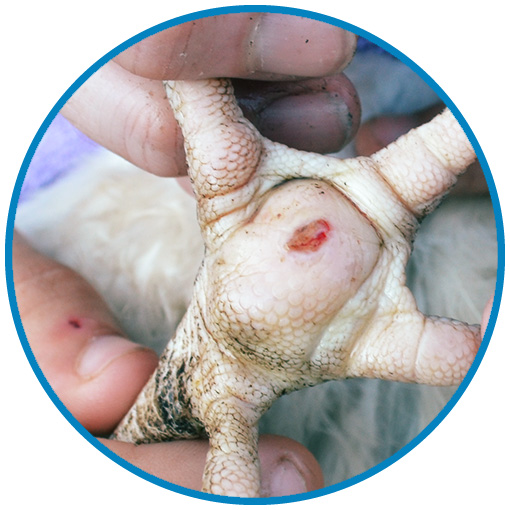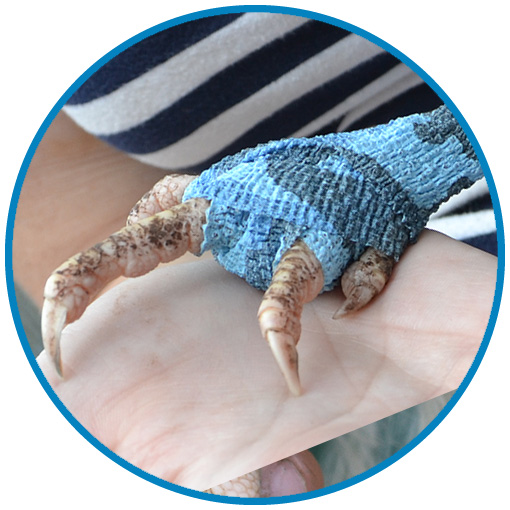What Is Bumblefoot?

Also known as plantar pododermatitis in veterinary medicine, Bumblefoot is an infection of the foot with the bacteria Staphylococcus — or essentially, a staph infection. The most common way for chickens (or ducks) is stepping on sharp objects such as stones, splinters, nails, or even pine cones while foraging and scratching. Bumblefoot is characterized as a lump-shaped red sore on the foot padding, typically with a brown scab over it. If not treated; in rare cases, it can be deadly.
Symptoms of Bumblefoot
Bumblefoot is usually relatively easy to spot. Signs that you need to look out for include limping and a puffy swollen foot or toe. The most tell-tale sign would be a black scab where the infection is. You may also see an actual wound or abrasion, redness between the toes, or inflammation of the whole foot or leg. The middle part of the infection is simply dead tissue, which acts like a plug, and is called the kernel.
Common symptoms of bumblefoot are the same as any foot injury:
- Limping, hobbling or favoring one leg
- Decreased activity
- Not using a leg at all
- A swollen foot pad or toe
- A sore foot or foot pad
Treating Bumblefoot
We always strive to treat bumblefoot as naturally as possible (depending on how severe it looks). You’ll need some supplies, but not many:

- Bucket or Basin (for soaking feet)
- Bath Towel
- Nitrile Gloves
- Epsom Salt
- Prim Salve
- Triple-Antibiotic Ointment ()
- Gauze Pads
- Self-Adhesive Vet Wrap
Treatment Steps
-
The first step would be to attempt to treat it for a few days by simply soaking the foot in an Epsom salt bath:
-
Wrap your chicken securely in a towel, with the foot open.
-
Soak once or twice daily for about 10 to 15 minutes at a time. You may want to soak it several times a day for three to five days. We recommend about half a cup of Epsom salt per gallon of warm water. It’s not en exact science.
-
After soaking for a while, you can try to scrape off the scab and remove the kernel without aggressive intervention.
-
Gently push around the kernel to try and get it out. Be careful not to push too hard or force it, as you may cause more harm and the infection to spread even further.
-
If struggles to come out, soak for a few more times and try again.
-
You could also add some charcoal poultice or Prid (a common drawing salve) after soaking to help draw out the infection and make removal much easier.
-
Once the kernel is out, clean the area very well with disinfectant or alcohol. Add Neosporin and apply duoderm or a nonstick gauze.
-
Wrap it securely in place with the vet wrap.

